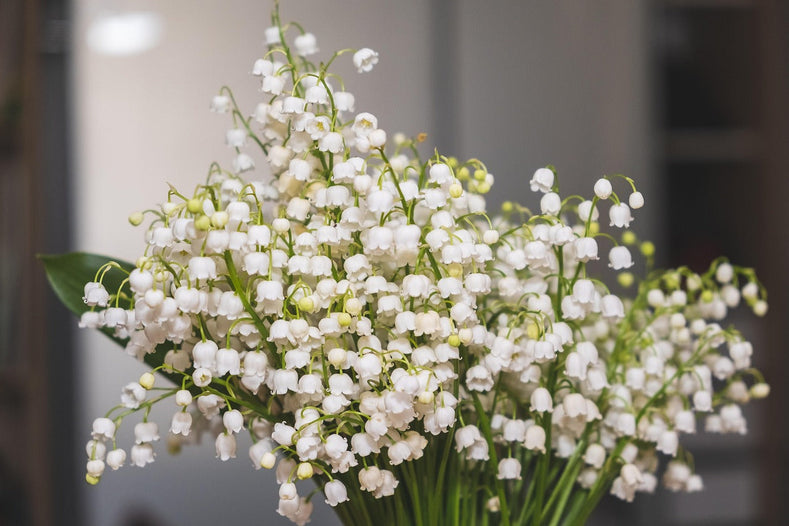Lily of the Valley (Convallaria) is a hardy perennial known for its delicate, fragrant white bell-shaped flowers and lush green foliage. It thrives in shady areas and is perfect for ground cover in woodland gardens. Follow these steps to successfully plant and care for Lily of the Valley.
Planting Lily of the Valley
- When to Plant Best Time: Plant in early spring or fall (preferably in fall for strong root establishment). USDA Zones: Hardy in zones 3-8. In warmer climates, it may struggle with excessive heat.
- Choosing a Location Light: Prefers partial to full shade. It can tolerate morning sun but thrives in shaded areas. Soil: Moist, rich, well-draining soil with a slightly acidic to neutral pH (6.0-7.0). Spacing: 6 inches (15 cm) apart, as plants will spread over time.
- Preparing the Soil Loosen the soil and enrich it with organic matter like compost or well-rotted manure. If soil is heavy clay, mix in sand or peat moss for better drainage.
- Planting Pips (Root Rhizomes) Soak pips (roots with tiny buds) in lukewarm water for 1-2 hours before planting. Dig a shallow hole (about 1-2 inches deep) and place the pip with the bud facing upward. Cover lightly with soil and water thoroughly.
Caring for Lily of the Valley
- Watering Keep the soil evenly moist but not soggy. Once established, it is drought-tolerant but prefers consistent watering in dry periods.
- Fertilizing Apply a balanced, slow-release fertilizer (10-10-10) in early spring. Adding organic compost in the fall helps maintain soil health.
- Mulching Apply a 2-inch (5 cm) layer of mulch (such as bark, compost, or leaf mold) to retain moisture and suppress weeds.
- Pruning & Maintenance Remove spent flowers to encourage healthy foliage. Trim yellow or dying leaves in late fall or early winter. If plants become too crowded, divide every 3-5 years in early spring or fall.
- Overwintering Hardy perennials that do not need winter protection in most climates. In colder regions (Zone 3-4), apply a light mulch layer after the ground freezes for extra insulation.
Bonus Tips
✔ Lily of the Valley spreads quickly, making it great for naturalized areas but may require containment in small gardens.
✔ It produces red berries in late summer, but these are toxic if ingested, keep away from pets and small children.
✔ Its strong fragrance makes it a popular choice for cut flower arrangements and wedding bouquets.
Enjoy Your Lily of the Valley!
With its sweet fragrance and charming blooms, Lily of the Valley is a low-maintenance yet elegant addition to shady gardens. Whether used as ground cover, in woodland gardens, or as a border plant, it will bring beauty and fragrance to your outdoor space for years to come!

